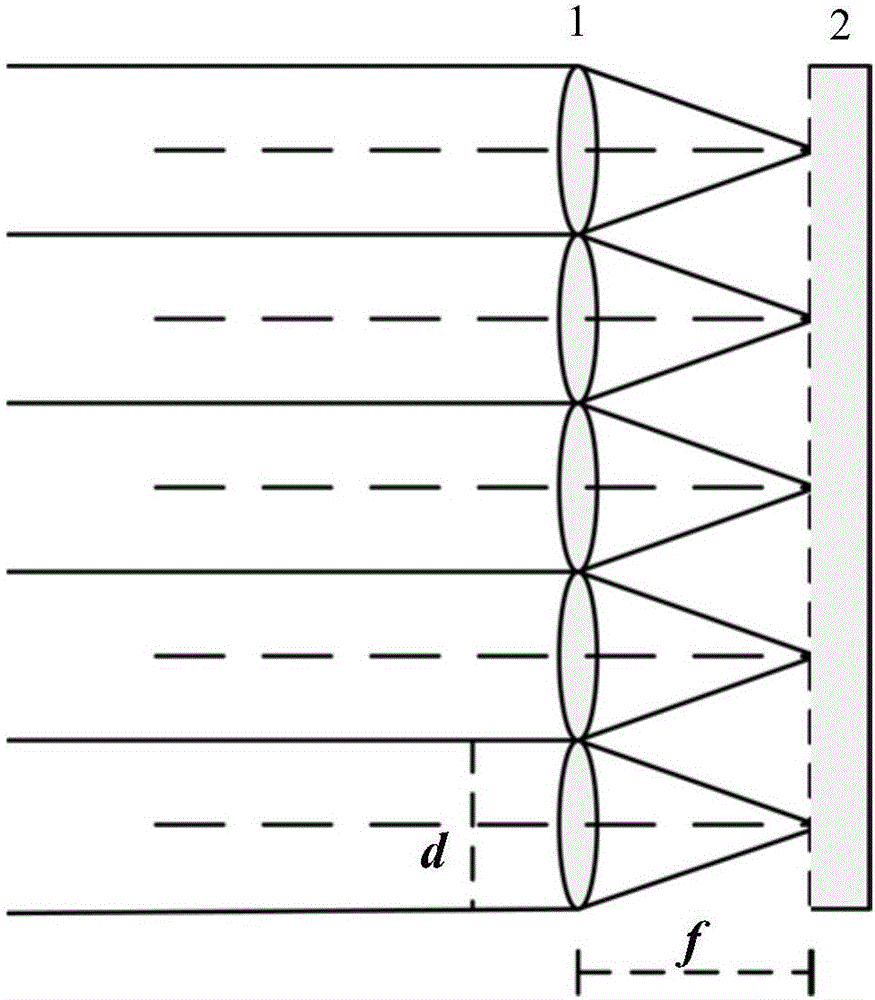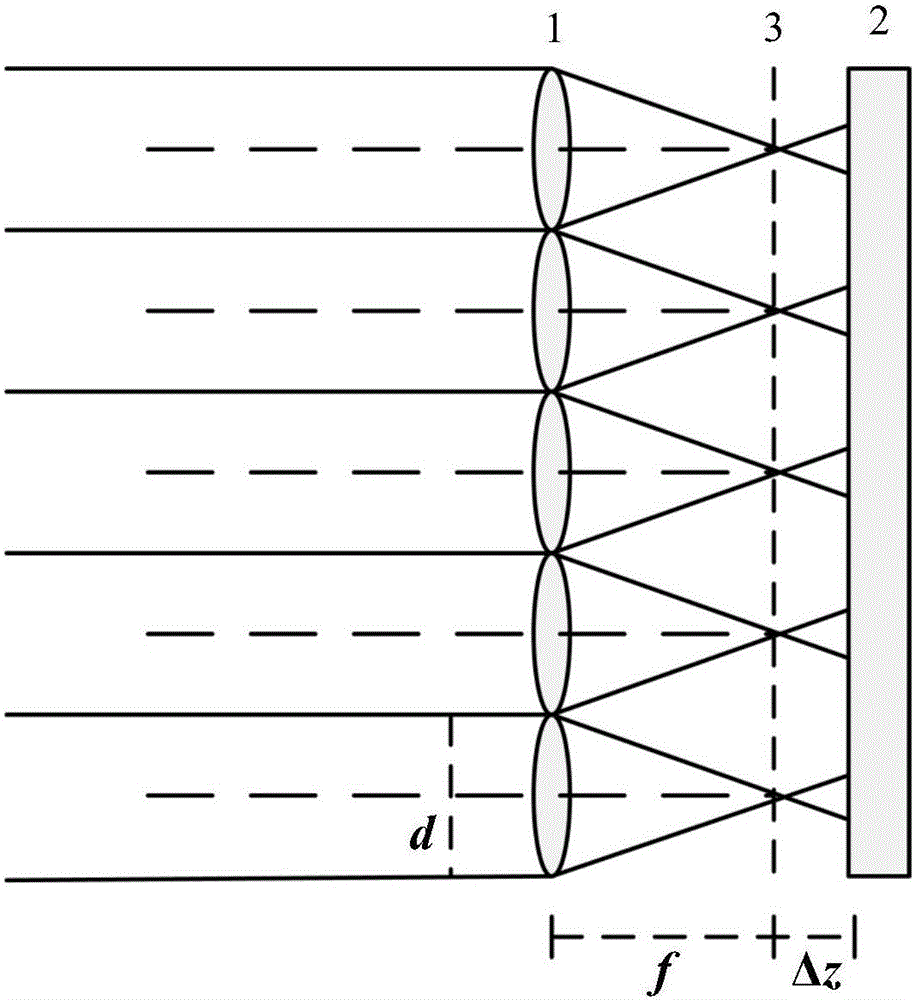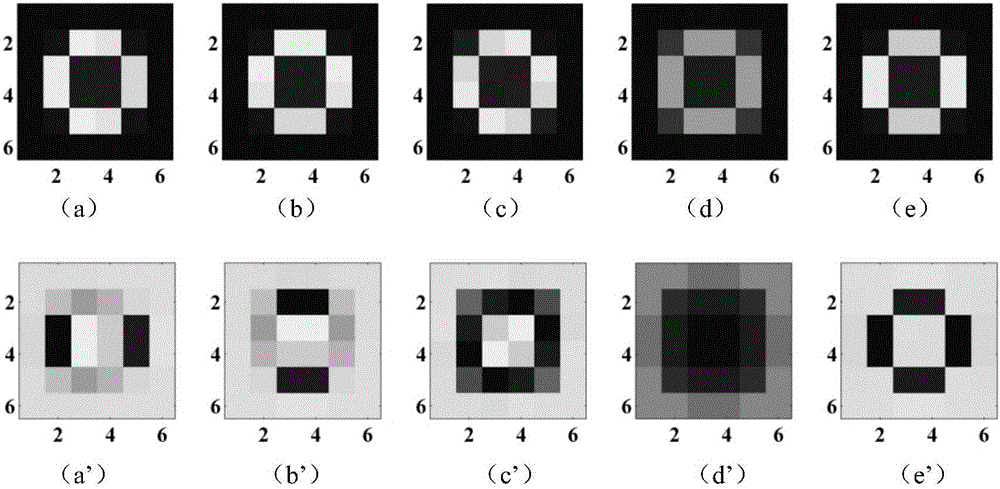Wavefront detection method based on multiple patterns in subapertures of Hartman wavefront detector
A sub-aperture and detector technology, applied in the field of adaptive optics, which can solve the problems of destroying the central symmetry of the converging light spot, wavefront reconstruction error, defocusing and astigmatic distortion, etc.
- Summary
- Abstract
- Description
- Claims
- Application Information
AI Technical Summary
Problems solved by technology
Method used
Image
Examples
Embodiment Construction
[0055] 1. Build an adaptive optics system:
[0056] Such as Figure 4 As shown, the system consists of a point light source 4, a first lens 5, a PBS beam splitter 6, a second lens 7, a third lens 8, a wavefront detector 9, a fourth lens 10, a fifth lens 11, and a wavefront corrector 12. The mirror 13, the sixth lens 14, the seventh lens 15, the imaging camera 16, the computer 17, the resolution board 18, the turbulence simulator 19 and the BS beam splitter 20 are composed. The turbulence simulator 19 in the system gives the static wavefront distortion, corresponding to the atmospheric coherence length of 10cm; the wavefront detector 9 represents the first wavefront detector 9a or the second wavefront detector 9b, and the first wavefront detector 9a is a traditional Hartmann wavefront detector, the second wavefront detector 9b is the defocused Hartmann wavefront detector proposed in the present invention. The two are used in the optical path successively to compare the present inv...
PUM
 Login to View More
Login to View More Abstract
Description
Claims
Application Information
 Login to View More
Login to View More - R&D
- Intellectual Property
- Life Sciences
- Materials
- Tech Scout
- Unparalleled Data Quality
- Higher Quality Content
- 60% Fewer Hallucinations
Browse by: Latest US Patents, China's latest patents, Technical Efficacy Thesaurus, Application Domain, Technology Topic, Popular Technical Reports.
© 2025 PatSnap. All rights reserved.Legal|Privacy policy|Modern Slavery Act Transparency Statement|Sitemap|About US| Contact US: help@patsnap.com



